There has always been something mysterious about cemeteries. Perhaps the knowledge that those interred took secrets to their grave has resulted in the enigmatic haze that seems to linger over these peaceful resting sites. But it’s not just the dead that hold secrets. Cemeteries themselves are often home to puzzling (and sometimes spooky) features.
Joy Neighbors, author of the book The Family Tree Cemetery Field Guide shares three of her most shocking finds while scouring cemeteries for genealogical clues.
Tombstone Tourist
We think of cemeteries as quiet tranquil places. As a “Tombstone Tourist,” I’ve spent years in cemeteries searching for genealogy clues, exquisite artwork, stunning vistas, and that perfect photograph. A trip to the graveyard is never boring. I’ve come back with tales of beauty, delight, and terror. Here are just three shocking discoveries I’ve made while searching in cemeteries.
1. Abandoned Crypts
There’s a cemetery in Kentucky that holds a baffling find; three 19th century mausoleums that have disappeared right in the middle of the grounds.
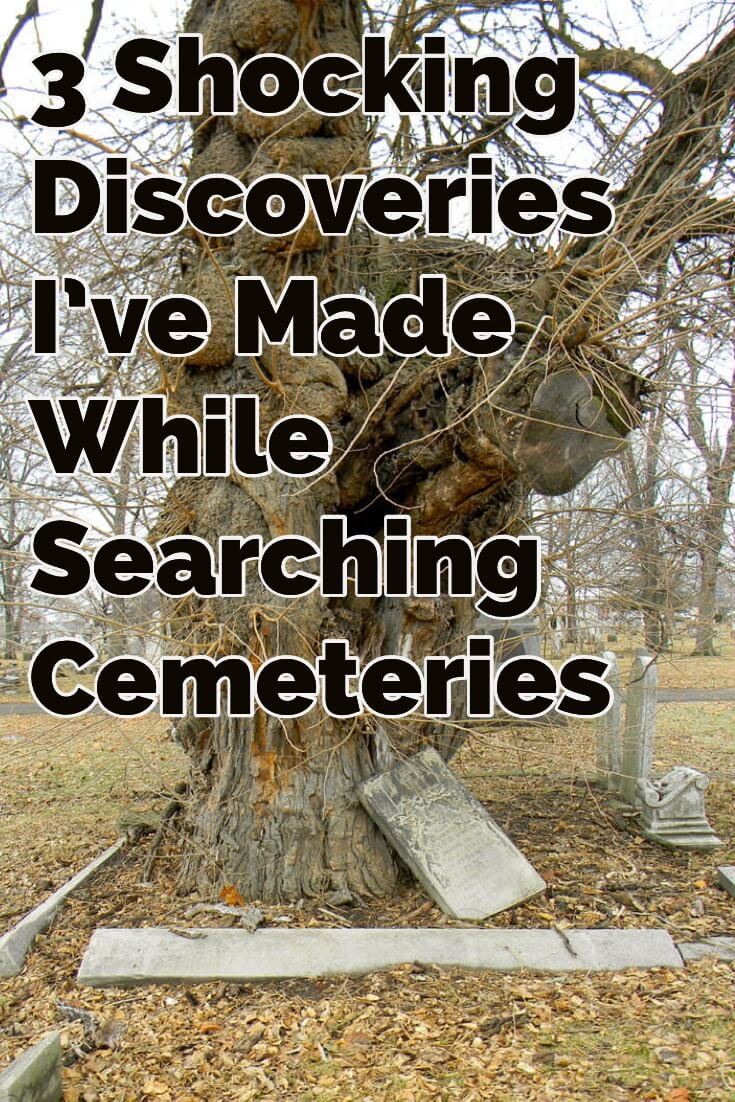
On a humid July day, I stepped inside a grove of trees to escape the searing heat. Inside that cool dimness stood three stately mausoleums, each with a façade protruding from a hill now enveloped in trees, vines, and shrubs. This thicket had been growing untamed for years.
The mausoleums stood side-by-side. The first was a small brick crypt with a surname above the entry along with a date “1895.” But the tomb had been bricked up for so long, trees grew on top obscuring its existence.
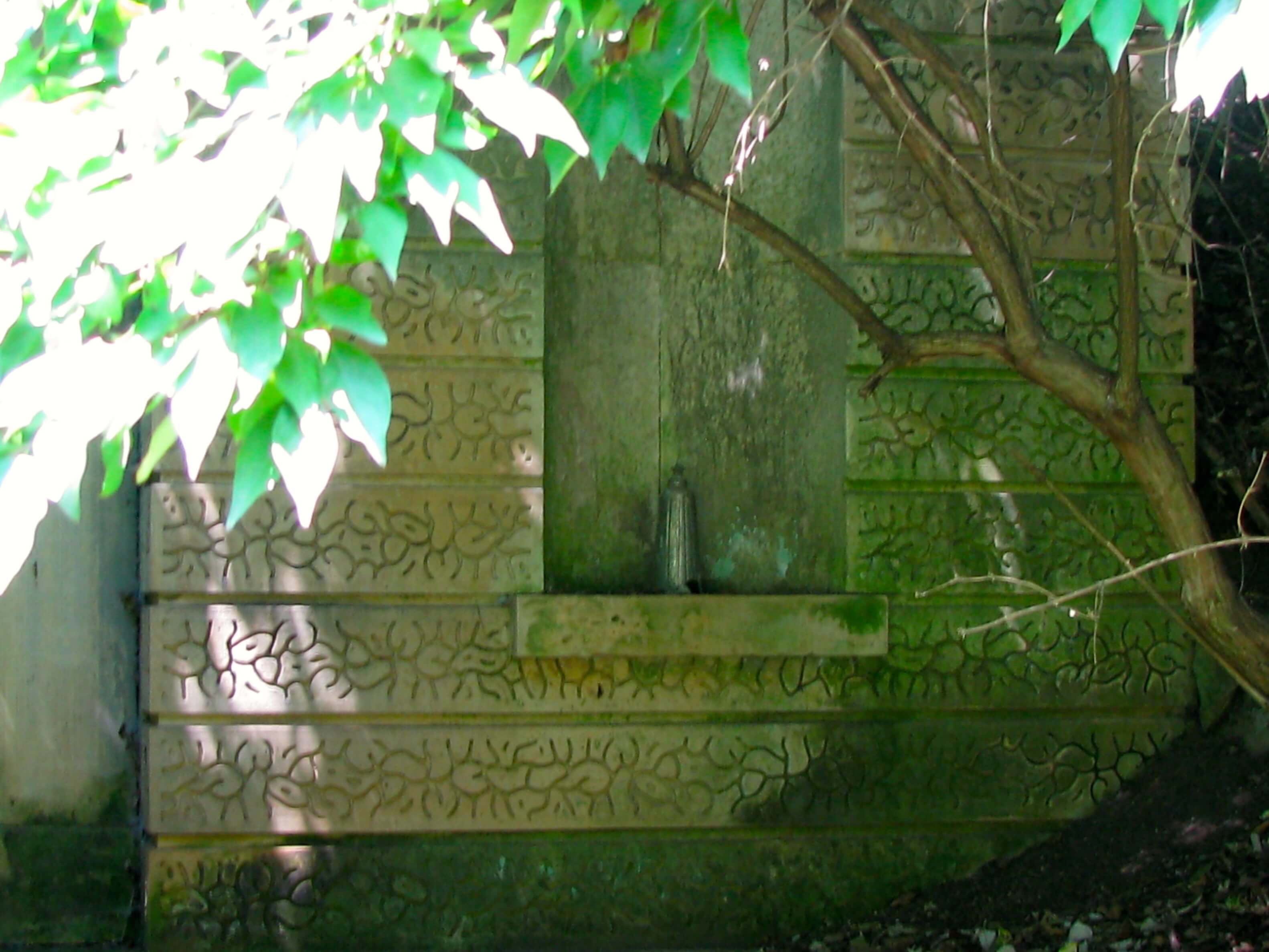
The middle mausoleum was built from pressed concrete with niches and arches along the walls. Again, the doorway and windows were bricked shut against the onslaught of trees and ropy vines that brushed and clung to its surface.
The third mausoleum was constructed of plainer concrete set off in a corner. No names or dates were visible but trees blocked any approach. It was visible only through a tangle of vines and foliage.
Who had these monuments been for?
Why had they been abandoned?
Had the bodies been moved when family members relocated?
Or were they simply forgotten?
Perhaps no one left payment for special care in perpetuity.
Apparently, what has been lost and forgotten shall remain so.
2. The Grave in the Middle of the Road
Having grown up in Indiana, I can assure you that Hoosiers are a practical lot. But there’s one roadside attraction that will cause the most stoic of residents to stop and ponder the audacity and fortitude it took to keep a grave in the middle of the road for close to 200 years.
The story began in 1808 when Nancy Kerlin married William Barnett, the great, great, great grandson of Pocahontas and John Rolfe.
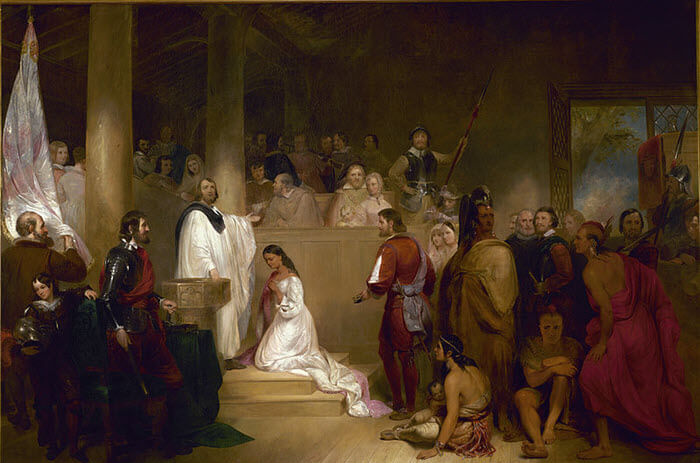
Baptism of Pocahontas by John G. Chapman, 1840. (Public Domain Image)
They settled near what would become Amity, Indiana to raise their family.
Nancy died on December 1, 1831 and was buried on top of a small hill overlooking Sugar Creek, one of her favorite spots. Soon others were also buried here and over the years a small county cemetery developed.
But then progress reared its head around the turn of the last century and Johnson County decided that a road needed to be built to connect Amity with other thoroughfares. This meant the grave had to be relocated.
Nancy’s grandson, Daniel G. Doty had a problem with that.
Doty went to the county and voiced his opposition. Nothing changed so he decided to take matters into his own hands. When county work crews arrived they found Doty sitting on his grandmother’s grave – with a loaded shotgun. Again, Doty told the county that his grandmother would stay where she was. If they insisted on trying to move her grave, they would have to deal with him. With that prospect, county workers agreed to let things “rest” where they were.
A concrete slab was placed over the grave in 1912 to protect it.
An historical marker was added in 1982, and Nancy became an anomaly.
But three years ago, after numerous reports of accidents, something had to be done.
In 2016, Nancy’s grave was temporarily moved to widen the road. It was the perfect time for University of Indianapolis archaeologists to see just what was buried there.
Amazingly, they discovered that residents have been driving past not only Nancy’s grave but also the remains of six others – a man, a woman and four children. Was this the Barnett family? No one’s said for sure but the state has now designated this small spot in the middle of the road a family cemetery.
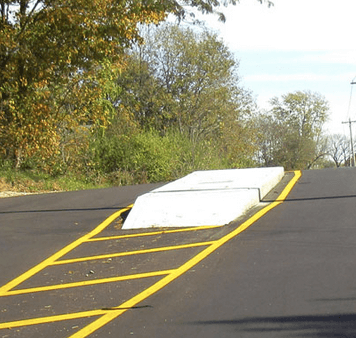
The Grave in the Middle of the Road
3. The Tree of the Dead
In Terre Haute, Indiana there stands the most massively disfigured cemetery tree I’ve ever encountered. Though its genus is no longer identifiable, it stretches at odd angles as if reaching out in despair.
It was a frigid January day when I encountered what I have since called “The Tree of the Dead.”
I’d been taking photos when my husband waved me over to see his find. Over the years I have seen hundreds of ominous cemetery trees, but none like this. This tree was surely waiting for the headless horseman to plunge through that opening with a rush of fetid air as he continued searching for his head.
Stepping closer, I attempted to take a photo, but the tree was having none of it. My camera shut down immediately. There are several explanations for this common cemetery occurrence; the batteries are too cold, connections are corroded, post seals are damaged, or spirits are sapping energy attempting to manifest. Yes, well … but after changing the batteries two more times, I had yet to get one picture.
My husband thrust his camera into my hands and I was able to get two photos before the batteries died. One shows the tree in all of its appalling façade with twisted limbs reaching akimbo to the sky. (Notice the limb with a dragon’s head at the end?)
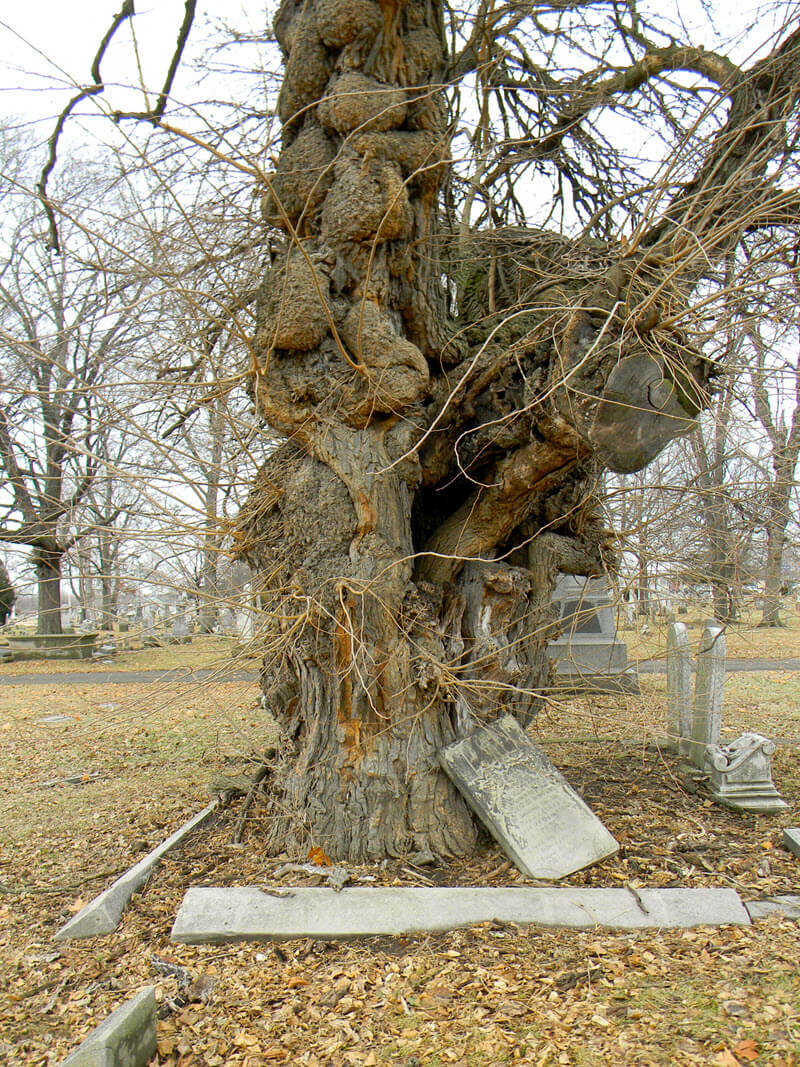 The second shot shows the opening in the middle of the tree: a bizarre heart shape. And the mishmash of tombstones scattered around the plot date to the late 1800s but names are indecipherable.
The second shot shows the opening in the middle of the tree: a bizarre heart shape. And the mishmash of tombstones scattered around the plot date to the late 1800s but names are indecipherable.
Who is buried here?
What happened to give the tree such an appearance?
Could it be caused by a decades-old drought?
Maybe arsenic used to embalm bodies back in the 19th century slowly leaching its way up into the tree?
Or could it be … something else?
A visual reminder of how perilously close fact and fiction are entwined in the graveyard.
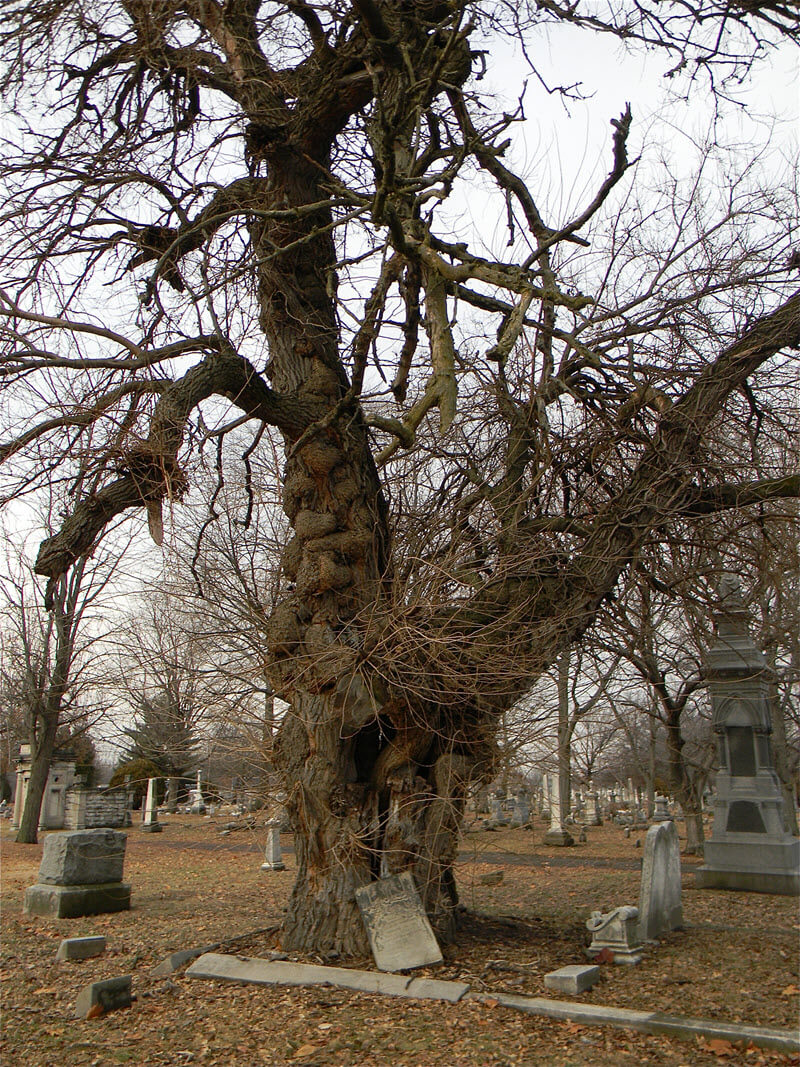
Cemetery Secrets
Cemeteries hold a vast amount of secrets, most of which we may never know. But the genealogist’s pursuit of answers means we’ll never stop exploring and asking the questions, and perhaps one day, those secrets taken to the grave may be revealed.
Cemeteries are crucial for any genealogist’s search, and The Family Tree Cemetery Field Guide by Joy Neighbors will show you how to search for and analyze your ancestors’ graves.
Discover tools for locating tombstones, tips for traipsing through cemeteries, an at-a-glance guide to frequently used gravestone icons, and practical strategies for on-the-ground research. And once you’ve returned home, learn how to incorporate gravestone information into your research, as well as how to upload grave locations to BillionGraves and record your findings in memorial pages on Find A Grave.
Click here to order your copy today!
Learn more about using Billion Graves:
(Click on player to unmute sound)
About the Author: Joy Neighbors is a national speaker, author, freelance writer, blogger, and avowed Tombstone Tourist. Her book, The Family Tree Cemetery Field Guide focuses on how to locate cemetery records, what to do when you get to the cemetery and how to understand the silent language of the stones. She also shares a few stunning family secrets along the way. Joy also writes the weekly cemetery culture blog, A Grave.

Disclosure: This article contains affiliate links and Genealogy Gems will be compensated if you make a purchase after clicking on these links (at no additional cost to you). Thank you for supporting Genealogy Gems!

So far I have not done much cemetery research, but this article makes me think that I should.
Thank you.
I couldn’t agree more! I’m really looking forward to interviewing Joy in our booth at RootsTech. Stop by on Saturday at 12:30 if you’ll be there, and if not you’ll hear her soon on the Genealogy Gems Podcast.
Hello. I have recently started doing Ancestry research and have been astounded at what I have found. No creepy tree stories. However it is nice to know that some ancesters took special care to by buy family plots even though they knew eventually the girls might marry and want to be buried with their husband. I found it interesting the both my grandfather and my grandmother are both buried with their individual parents.
That’s very interesting! I wonder if that was a common practice at certain times or just unique to your family.
In a booklet my great aunt wrote for my uncle she said that my great grandfather’s first wife was buried with her (the wife’s) family, leading my aunt to think that she died young. I guess they figured he would marry again and be buried with the latter wife. This was in the mid-1800’s.
Forty years ago I worked very close to a cemetery where many of my Dad’s family were buried. I started visiting after work to hunt down the people I knew were there and see if I recognized any other family names. I often wonder what people thought when they saw me wandering around in the morning mist. I was a nurse coming off night shift dressed in white!
What a wonderful story. Sounds like a book by Wilkie Collins! 😉
About 5 years ago I found the farm on which my gr great grandparents were buried. The tall granite marker with the parents names had been knocked over, the foot stones stacked and several large rocks were around the monument and it was in the middle of a field that was being planted and harvested. We made contact with the owner and received permission to have it raised. In the meantime I found an obituary for a son who was buried on the family farm. I also found an article about a woman who did dowsing, contacted her and she agreed to come perform the dowsing. I was videoing it when my phone went totally dead! I had never had that happen and it was charged. Thirty minutes later it came back on mysteriously! She found 2 adult women, 2 adult men and three toddlers. After further search I found another obituary for a grown daughter buried there and 3 toddler grandchildren who died in 1882. She said that the large rocks would have marked the graves. Sadly they had totally desecrated the family cemetery. But I was excited to learn all I did and was startled by the phone totally dying.
I checked out this book from the local library about a montha ago. Decided I needed my own copy. All genealogist should read it. It is very informative & entertaining.
I am part Native American & a firm believer in spirits, both animal and plant. My spirit animals are wolf, bear, and eagle and my tree spirit is an oak. I wish I could come and visit that tree to see if it would give me a message!
Shirley /Fenstermaker’s story jogged my memory. My mother died in 1934 when I was 4 years old. She is buried in her father’s plot rather than my paternal grandfather’s plot. I have wondered for years why the burial was arranged that way and iminagen all sorts of situations. Were the families feuding? Was one family more financially able to foot the bill. Did my paternal grandfather not like my father? Hmmmm………
Spent many hours walking, crawling, pushing through brush brambles and briers just to find and take pictures of tombstones. I regret only one such adventure. If I may. My sweetheart and I went to a small cemetery in New Jersey to gather family names and pictures for Billion Graves and our personal records.
While I was taking pictures my wife was clipping brush and bushes from the stone that identified her families plot. We had a great day. I filled to clips of pictures and my sweetheart did a magnificent job on that stone. It was only a few hours later, when she started itching that I really “looked” at the pictures and realized that the brush that she cleared from that stone was poison ivy. Wouldn’t have been so bad but when she found that I’m not affected by poison oak, ivy or sumac. She was not happy.
I always look at the trees in cemeteries they have such character. Thanks for the article.
My brother Ray says we have visited more dead relatives than live ones. Trying now to visit the relatives above ground!
I have started looking for gravestones and burial places for my ancestors. After finding my Paternal grandfather and great-grandfather, I looked for my Paternal GG Grandfather in the same area. No luck. I went to the R.B. Hayes library in Tiffin, Ohio and started looking at every page in the burial listing for the township I thought he would be in. And there he was – last name misspelled! (The “A” was changed to a “K”.) I was able to drive over to the cemetery and located his stone – still readable after his burial in 1885. I plan to go back to the area this summer to look for his wife, who was buried elsewhere (they were separated.) I wish I could get someone to update the lists with the correct spelling, to match the gravestone and census papers, but that seems impossible to do. I will continue to visit cemeteries for a long time.
That is indeed a spooky old tree. The lumps on it are called burls and are often caused by a virus or fungus. Our ancestors would love to make them into bowls or tools, as the wood is not only beautiful but strong.
Fascinating, thanks for sharing!
This was fascinating reading, the story as well as the comments.
I have not done much in researching cemeteries, guess I need to get into that. Think I am missing out!
I took my grandsons to Arlington Cemetery to see where my brother was buried so they would not forget he was an honored hero from WW II. Sadly his gravestone was six rows beyond from where my sisters & I witnessed his casket being lowered into his grave.
When I was a little girl, my Papaw would take me and my sister to rural cemeteries to look at headstones. We made a game out of it by seeing who could find the oldest grave and the youngest grave, etc. To look back now it seems kinda strange that we did that but I loved every minute of it! I’m almost sixty and I still love to go to cemeteries!